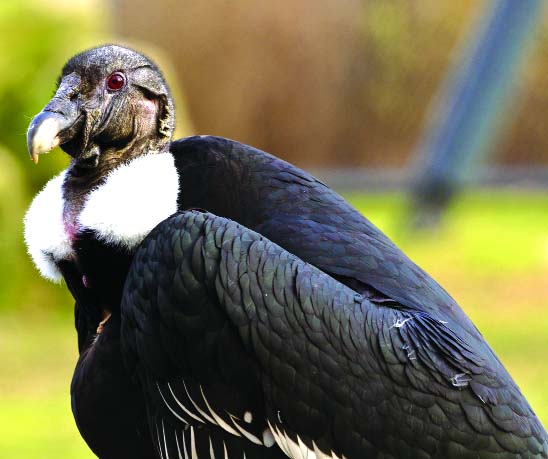
UNB, Dhaka :
The government has set up two ‘vulture safe zones’ free from toxic veterinary drugs in the country to protect the white-rumped vulture (Gyps bengalensis) from its imminent extinction.
“The government is committed to saving vultures and it has already announced two safe vulture zones in the country,” Environment and Forests secretary M Nojibur Rahman told the inaugural session of the fourth SAVE meeting being held at a city hotel.
SAVE is a consortium which works in India, Pakistan, Nepal, Bangladesh and Cambodia for vulture conservation.
“The safe vulture zones will be free from toxic veterinary drugs like Diclofenac and Ketoprofen. An adequate number of nesting and rooting trees of vultures will be ensured in the zones where there will be no human vulture conflict,” IUCN vulture investigator
ABM Sarowar Alam told UNB on the sidelines of the programme. The two vulture zones have been established in greater Sylhet and greater Khulna regions covering the ranges of 19,663 square kilometers and 27,717 square kilometers respectively.
Alam said the vulture hotspots and nesting sites are taken as the centres of vulture zones from which an area of 100 km radius is included.
The vulture zones are under the jurisdiction of the Department of Forest (DoF). The local DoF office in collaboration with other government offices and local communities will undertake necessary steps for ensuring the implementation of the vulture zones in Bangladesh.
Speaking as the chief guest, Finance Minister AMA Muhith said during his childhood, he had seen a plenty of vultures in Sylhet region in 1941, but the vulture population has already declined to less than 500 in the country. He said the government in 2010 banned veterinary drug Diclofenac, which contributes to the decline of vulture, and the authorities concerned will be asked to ban another toxic drug Ketoprofen.
IUCN country representative Ishtiaq Uddin Ahmad said once vultures were the most prominent bird species, but about 99.9 percent of vultures in South Asia disappeared in last two decades.
The government has set up two ‘vulture safe zones’ free from toxic veterinary drugs in the country to protect the white-rumped vulture (Gyps bengalensis) from its imminent extinction.
“The government is committed to saving vultures and it has already announced two safe vulture zones in the country,” Environment and Forests secretary M Nojibur Rahman told the inaugural session of the fourth SAVE meeting being held at a city hotel.
SAVE is a consortium which works in India, Pakistan, Nepal, Bangladesh and Cambodia for vulture conservation.
“The safe vulture zones will be free from toxic veterinary drugs like Diclofenac and Ketoprofen. An adequate number of nesting and rooting trees of vultures will be ensured in the zones where there will be no human vulture conflict,” IUCN vulture investigator
ABM Sarowar Alam told UNB on the sidelines of the programme. The two vulture zones have been established in greater Sylhet and greater Khulna regions covering the ranges of 19,663 square kilometers and 27,717 square kilometers respectively.
Alam said the vulture hotspots and nesting sites are taken as the centres of vulture zones from which an area of 100 km radius is included.
The vulture zones are under the jurisdiction of the Department of Forest (DoF). The local DoF office in collaboration with other government offices and local communities will undertake necessary steps for ensuring the implementation of the vulture zones in Bangladesh.
Speaking as the chief guest, Finance Minister AMA Muhith said during his childhood, he had seen a plenty of vultures in Sylhet region in 1941, but the vulture population has already declined to less than 500 in the country. He said the government in 2010 banned veterinary drug Diclofenac, which contributes to the decline of vulture, and the authorities concerned will be asked to ban another toxic drug Ketoprofen.
IUCN country representative Ishtiaq Uddin Ahmad said once vultures were the most prominent bird species, but about 99.9 percent of vultures in South Asia disappeared in last two decades.

